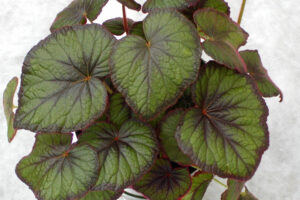The Musa basjoo, also known as the Japanese fiber banana or the Green Banana, is an ornamental plant from the Ryukyu Islands near Japan. While its inedible fruit limits its value for fruit production, it is extensively cultivated for its striking appearance and fiber production. In temperate regions such as New Jersey, the Musa basjoo is valued for its robust nature and the tropical ambiance it adds to gardens.
Cold Hearty Care
Care for this species involves several specific requirements to ensure its perennial survival outside its native tropical habitat. During the winter months, the plant must be protected from the cold; gardeners can accomplish this by heavily mulching the plant’s roots after pruning it back before the first frost or, alternatively, by digging up and storing the rhizomes in a cool, dry place until after the last spring frost. These steps allow the plant to withstand temperatures down to -10 degrees Celsius (14 degrees Fahrenheit) and effectively regenerate each spring.
Sunlight and Fertilization
Musa basjoo requires a full sun location with a minimum of six hours of direct sunlight each day for optimal growth. Proper fertilization is crucial and should involve a balanced 10-10-10 or a potassium-rich fertilizer administered monthly throughout the active growth period from spring to early fall. Fertilization should halt during the plant’s dormant winter phase, ensuring that the nutrients are applied evenly around the plant’s base.
Propagation
Propagation in non-tropical environments such as New Jersey is generally done for ornamental purposes using the plant’s suckers, or shoots, that emerge from the base of the plant. These shoots should be cut with some of the roots attached and replanted in well-drained soil in full sunlight. Proper spacing is critical to avoid overcrowding, ensuring good air circulation and adequate sunlight, and efficiently directing resources for healthier growth.
Rapid Growth
Musa basjoo grows rapidly, often reaching its full height of up to 6 meters (about 18 feet) in a single season. Its leaves can extend up to 2 meters (6 feet) in length. These characteristics make it a dramatic addition to any garden space. Historically, the plant’s fibers have been used to produce bashofu cloth, valued for its durability and comfort in hot weather. The plant’s lush foliage is also used for its aesthetic qualities to create a tropical landscape effect in cooler climates.
Non-Edible but Biodiverse
Despite its rapid growth and resilience, the Musa basjoo’s large-seeded and minimally-fleshed fruits are not edible. However, its ornamental value, coupled with its ability to attract wildlife like birds and butterflies through its flowers and fruits, enriches the biodiversity of its environment. With its rhizomatous solid root system, the Musa basjoo becomes quite hardy, and its pollination by bats is a shared characteristic with other banana species. By fulfilling its care requirements, gardeners can successfully integrate this tropical plant into a temperate setting, where it adds beauty and a touch of exoticism.


